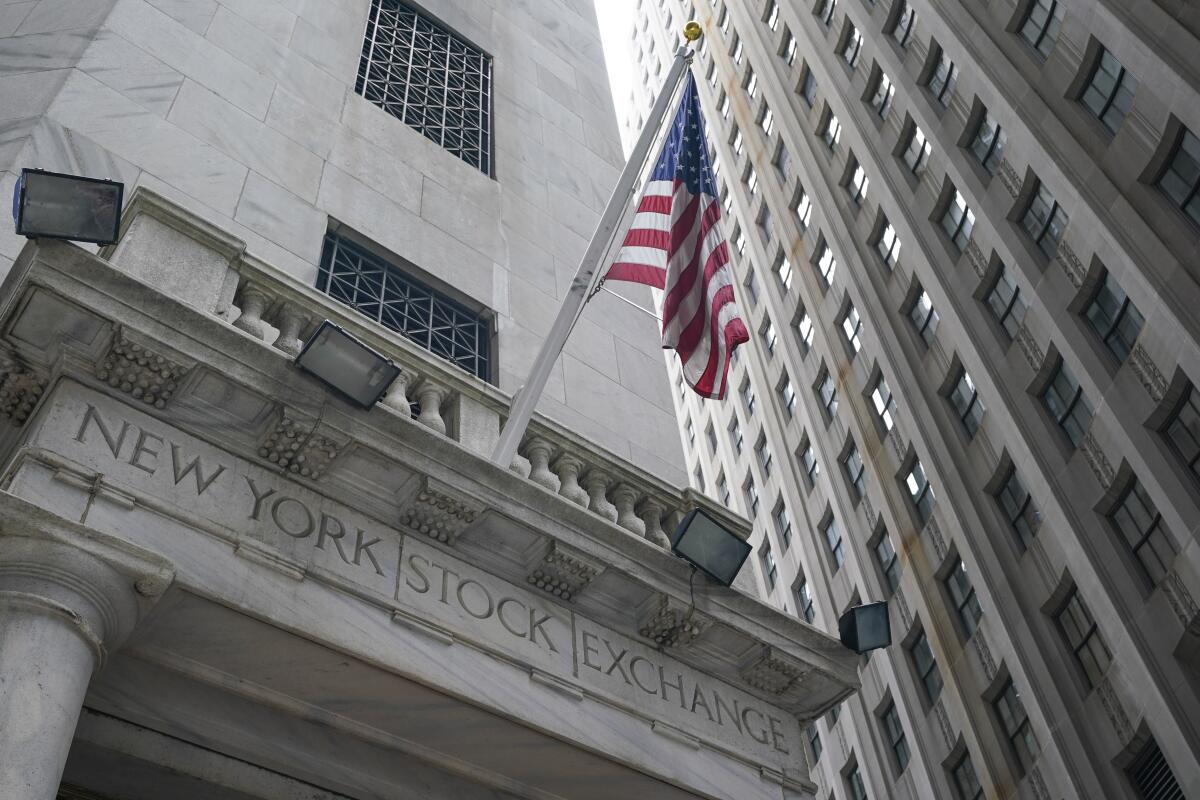Wall Street sinks as stocks tumble worldwide

Wall Street fell again Wednesday as stocks tumbled worldwide on worries about the economy.
The Standard & Poor’s 500 index dropped 0.7% after House Speaker Kevin McCarthy said Republicans and Democrats remain “far apart” in their efforts to prevent a potentially disastrous default on the U.S. government’s debt. The main U.S. stock index is on track for its worst week in more than two months as the once-unthinkable creeps closer to possibility.
The Dow Jones industrial average dropped 0.8%, while the Nasdaq composite lost 0.6%.
Other markets around the world were hit even harder as discouraging figures piled up on the economy. Stock indexes tumbled 1.7% in London, 1.9% in Frankfurt and 1.6% in Hong Kong.
Inflation in the United Kingdom remains worse than expected, raising worries that the Bank of England may keep hiking interest rates and squeezing its economy. In Germany, business confidence fell in Europe’s largest economy. And in China, worries remain about a weaker-than-hoped reopening from COVID restrictions as tensions rise with the United States over technology and security.
Inflation in Britain has fallen to its lowest level since the immediate aftermath of Russia’s invasion of Ukraine, when energy and food costs surged.
On Wall Street, the focus is squarely on Capitol Hill and the White House, where the latest battle between Democrats and Republicans is threatening to cause the nation’s first-ever default on its debt. The U.S. government could run out of cash to pay its bills as soon as June 1 unless Congress allows it to borrow more, and the widespread expectation is that a default would result in tremendous economic pain.
The stock market has remained mostly resilient despite the worries. Fear has been concentrated in the bond market, where prices have dropped for Treasury bills due to mature around the date of a possible default. Price drops for bonds raise their yields, and the yield on a Treasury maturing June 1 jumped to 7.22%, up by nearly 1.25 percentage points from a day before, according to Tradeweb.
The widespread belief on Wall Street has been that Congress would come to an agreement at the eleventh hour, as it’s done several times before, because a default would benefit no one.
“It will sort itself out over the next couple of weeks and end up being a positive catalyst,” said Jay Hatfield, chief executive of Infrastructure Capital Advisors.
He’s recently made moves among investments he oversees to protect against drops in stock prices. But he said that was mostly because the S&P 500 recently bumped up against a level, 4,200, that it’s had a difficult time getting past.
If the debt crisis roiling Washington were eventually to send the United States crashing into recession, America’s economy would hardly sink alone.
Still, concerns are rising that Congress may not feel the urgency to act unless markets fall sharply enough to force politicians’ hands. A measure of fear among stock investors on Wall Street climbed 8% and is near its highest level since March. That’s when worries were flaring about the strength of the banking system as it creaked under the weight of much higher interest rates.
Rates are so high because the Federal Reserve has yanked them up at the fastest pace in decades in hopes of getting high inflation under control. High rates do that by putting the brakes on the entire economy and hurting prices for stocks, bonds and other investments. That has many investors bracing for a recession even if Congress reaches a deal on the debt limit.
Traders are hopeful that just one more hike may be on the way this summer, if any at all. Fed officials were divided earlier this month on whether to pause their rate hikes at their upcoming meeting in June, according to the minutes of their latest meeting.
If the Fed does raise rates in June, Hatfield said he expects the next move to be a rate cut, in March.
“And they should have cut them in this past March,” he said. “We have a simple rule that they’re a year behind.”
Helping to limit Wall Street’s losses were several companies that reported stronger results for the start of the year than analysts expected.
Kohl’s jumped 7.5% after reporting a surprise profit for its latest quarter, helped in part by momentum at its Sephora beauty shops. Analysts had expected it to turn in a loss.
Resilient spending by U.S. consumers has helped to keep the economy out of a recession even as manufacturing and other areas struggle with higher interest rates. With the job market remaining solid, economists at Goldman Sachs said they expect consumer spending to remain a source of strength for the economy through this year.
Home builder Toll Bros. rose 2.1% after reporting much better results than analysts expected.
Most companies have been topping expectations, but much of that is because analysts set the bar particularly low. That has Wall Street focused even more on what companies say about their future prospects than how they performed over the last several months.
Analog Devices tumbled 7.8% despite reporting stronger profit and revenue than expected. It gave a forecast for earnings in the current quarter that fell short of analysts’ expectations.
Agilent Technologies fell 5.9% despite reporting better results than analysts expected. It cut its forecasts for earnings and sales for the full fiscal year and said the market has become increasingly challenging.
All told, the S&P 500 fell 30.34 points to 4,115.24. The Dow dropped 255.59 points to 32,799.92, and the Nasdaq lost 76.08 points to 12,484.16.
In the bond market, the yield on the 10-year Treasury rose to 3.73% from 3.70% late Tuesday. It helps set rates for mortgages and other important loans.
The yield on the two-year Treasury, which moves more on expectations for Fed action, rose to 4.37% from 4.33%.
AP writers Matt Ott and Joe McDonald contributed to this report.
More to Read
Inside the business of entertainment
The Wide Shot brings you news, analysis and insights on everything from streaming wars to production — and what it all means for the future.
You may occasionally receive promotional content from the Los Angeles Times.












